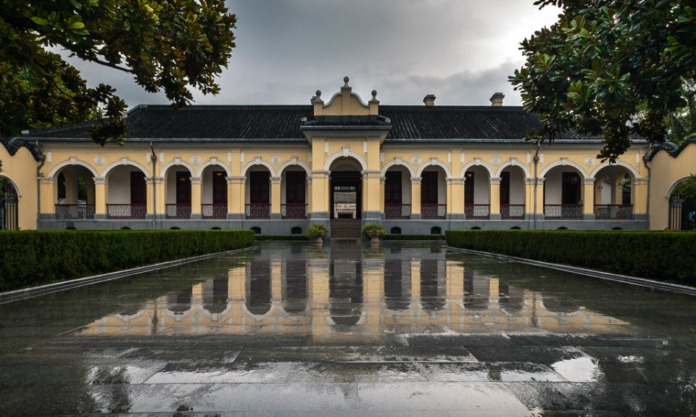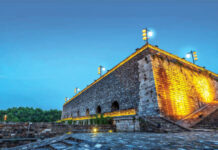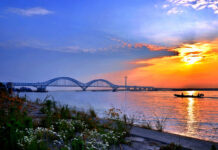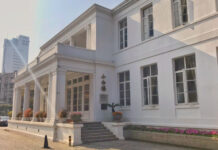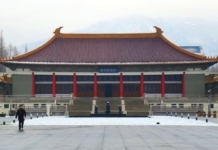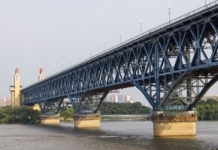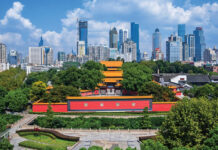Up there in the total top three of Nanjing’s premier tourist destinations, the Presidential Palace is a sprawling complex housing a myriad of architectural styles. Those, together with a sizable chunk of China’s republican-era history. The Nanjinger’s Capital Constructs breaks down the highlights therein.
Representing the Chinese idiom, “Round on the outside, square on the inside”, is the main gate to the complex. The rounded archways as entrance contrast with the their rectangular exits as a metaphor for someone who is lenient to others but strict on themself.
Once inside, we then should stop to ponder the mixed-architectural styles represented in the Second Hall. Here, a western style portico set off against traditional Chinese architectural elements provided the backdrop for ceremonies such as the presenting of letters of credence to Chinese heads of state by diplomats from abroad.
Nearby is a popular spot where visitors like to pose for a photograph, now just as before. The Scenic Steps that comprise the five steps leading to the Palace Meeting Room got themselves the nickname, “The Chevron Steps”, on account of the wide, green, stone handrails on either side. That was when they were used by Chiang Kai-shek and others to get snapped with foreign visitors.
We then come upon the Qilin Gate. Named for the pair of stone qilin, that mythical unicorn-like beast, which sits on either side, this wooden gateway straddles the Palace’s central axis. During the Repulican era, the doorway was only opened to allow Chiang Kai-shek to pass through. Everyone else went the long way round.
Away from the main Palace, the complex also contains numerous other fine pieces of architecture. Especially worthy of mention is the Zichao Building, used as the Nationalist Government Headquarters and for the Presidential Palace Office Building. Built in 1934 at a cost of 106,952 pieces of silver, it can be considered as one of the earliest examples of modern Chinese architecture.
Then there is the Office of the Provisional President (pictured above), styled after French Renaissance architecture. After Sun Yat-sen took office here on 1 January, 1912, the building was later home to numerous governmental agencies, including the govenor of Jiangsu.
But perhaps the most inspiring of the architecture herein is actually to be found in and around the complex gardens.
A Xieshan roof is that style of elaborate traditional Chinese roof with multiple inclines that is covered with curved titles. The Wangfei Pavilion in Nanjing’s Presidential Palace complex is one such example. Inside the single story building there are only three rooms and with the centre one protruding out over a lake. The Waterside Room offers views of the lake on three sides so capitavting that birds alighting on the pavilion were said to forget how to fly. Hence the Chinese name; Wangfei.
Nearby, outside the Yilan Pavilion is an opportunity to witness architectural magic. For in the exact centre of its roof sits a gourd-shaped porcelain vase. Filled with water, the vase served as a talisman protecting the building from fire.
We finally stop a little short of the Mandarin Duck Pavilion. Built as two squares slightly overlapping, when viewed from a distance, the optical illusion created makes the viewer think they are seeing two pavilions.
Whoever would have thought of such in a palace fit for a president?


